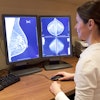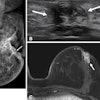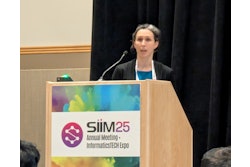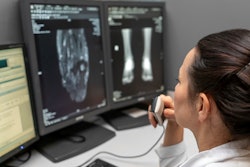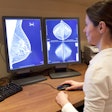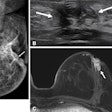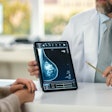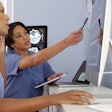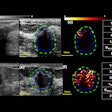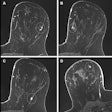Remote image interpretation has become a regular staple in breast imaging, so much so that this option may be here to stay.
Experts say the flexibility that remote interpretation provides aids with workflow challenges while covering multiple facilities within a health network.
“As radiologists, we adapt to new technology pretty easily,” said Stamatia Destounis, MD, from Elizabeth Wende Breast Care in Rochester, NY. “We’re able to adapt to different situations. You need to have a great team that you can trust, and then you can develop the workflow that will work for you within your environment.”
Prior studies have shown that remote breast image interpretation is feasible and effective, with comparable results to those of purely office-based interpretation. Advocates for remote work say that this leads to faster turnaround times and shorter wait times for patients.
A 2023 study found that nearly one-third of breast imaging radiologists performed remote reading for breast exams from home or a personal remote site for a median of 25% of their clinical time. The same study also reported that the most common types of exams read from home included the following: screening mammograms (90%), screening ultrasounds (58%), diagnostic mammograms and MRIs (both 53%), and diagnostic ultrasounds (49%).
And opinions seem optimistic about the ability of breast imagers to at least perform part of their clinical work from a remote setting. A 2024 survey study of members of the Society of Breast Imaging found that 79% of respondents favored hybrid work. In the same study, 76% of respondents believed remote work improves work-life balance and reduces burnout.
Stamatia Destounis, MD, explains how remote breast image interpretation can aid health facilities based in rural areas.
Destounis, who also chairs the American College of Radiology Breast Imaging Commission, said the COVID-19 pandemic forced radiologists to be more innovative, including performing remote reading while adhering to social distancing guidelines. She and colleagues noted improvements to their workflows and continue to do some of their work remotely.
“We have two breast radiologists who are remote all the time,” she said. “It allows us to do more diagnostic work and has freed us to continue to do high-quality screening and prompt callback for the patients to finish their workup by having enough of us [radiologists] to do so.”
That sentiment was shared by Amy Patel, MD, from Alliance Radiology, who has been using remote work capabilities since 2018 while also performing office-based imaging work.
“We’re achieving more buy-in over time, and I think COVID expedited that,” Patel said. “But I also think that we’re realistic about our workforce and how it’s not getting any better anytime soon. So, you really have to learn to adjust with the times.”
Amy Patel, MD, talks about some of the benefits of remote work for radiologists.
Destounis and Patel said that remote work comes with its unique challenges. These include ensuring network capabilities to send large files between devices, effective support from IT colleagues, training support, addressing operator variability, and continuous calibration for quality control.
“Even a few years ago, some critical access care sites were still on broadband [internet]. Sending the images over to us could take a long time,” Patel said. “Before we had internet capabilities upgraded…some images would take 45 minutes to an hour just to cross. When we flipped all our rural sites from 2D mammography to 3D, the time for imaging to cross took even longer.”
For remote imaging work to succeed for practices, the two said facilities need financial backing for new monitors and IT support.
“It is a bit of an expense up front,” Destounis said.
They added that well-trained staff, including technologists, are needed to continue providing effective imaging and care. Patel said that health networks should make sure that their PACS systems can handle the volume of image files being sent over to remote radiologists.
“I’ve heard some colleagues say it’s the biggest pain point of their day. But I’ve also heard a lot of radiologists, especially since COVID, taking up purely remote jobs, and they are loving it. They love the flexibility that comes with the job, and they feel comfortable with what’s given to them.”


